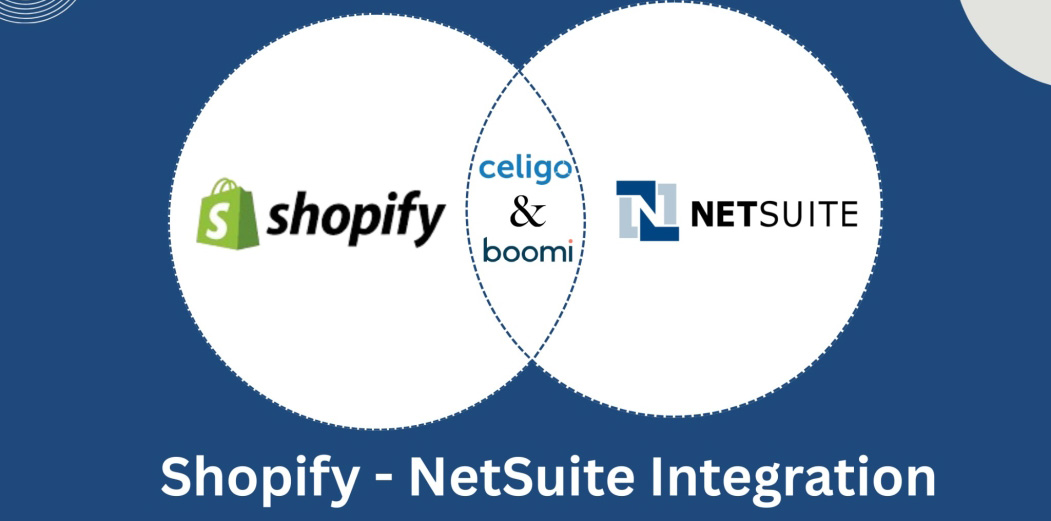
18 Sep How We Streamlined Data Flow with Shopify NetSuite Integration
How We Streamlined Data Flow with Shopify NetSuite Integration
It is a common challenge for businesses to manage data between different systems. When you have an online store on a platform like Shopify and also use a business management system like NetSuite, keeping everything in sync can become a full-time job. Doing this manually can lead to errors, take more time, and create additional work.
The Challenge: Manual Work and Its Problems
Before we helped, one of our clients had to manually move data between Shopify and NetSuite, which led to many issues. Whenever they received a new order from Shopify, someone on their team had to enter all the details into NetSuite manually. This was a slow process and often caused errors, like wrong shipping addresses or incorrect item counts.
This manual work caused many headaches for their operations:
- Order delays: It took a significant amount of time to prepare orders, resulting in customers waiting longer to receive their products.
- Inventory mismatches: Inventory numbers on Shopify didn’t always match those in NetSuite, resulting in situations where a product was sold online but was not actually in stock.
- Duplicate data: Sometimes, the same information is entered multiple times, cluttering their systems and causing confusion.
These problems were holding our client back and costing them valuable time and resources. They needed a solution, specifically a Shopify NetSuite integration, that would eliminate manual tasks and ensure their data was always accurate and up-to-date.
The Solution: Smarter Connections with Celigo and Dell Boomi
To address these problems, we implemented a Shopify-NetSuite integration to enhance their cooperation. While this particular solution was built using Celigo, we have the expertise to create this integration using a variety of other powerful middleware platforms, such as Dell Boomi, Workato, SnapLogic, and MuleSoft, or even native NetSuite REST API Suitelets. The choice of platform depends on the client’s specific needs and existing technology. Regardless of the tool, it acts as a bridge, ensuring that information flows smoothly and automatically between Shopify and NetSuite.
The way we set up this connection was smart because it used two different methods to sync data:
- Scheduled Updates: Some data, such as inventory counts, is updated in batches at specific times throughout the day. This helps handle a large amount of information at once without slowing anything down.
- Real-time Updates: For tasks that require instant accuracy, such as new customer orders, we set up real-time updates. This means that as soon as an order is placed on Shopify, a “webhook” triggers an immediate update, and the order details are sent straight to NetSuite.
A key part of the solution was making sure that when an order or customer record is created in NetSuite, the unique ID for that record is sent back to Shopify. The Shopify NetSuite integration guarantees that both systems remain continuously connected and in sync regarding the same record. This straightforward approach establishes a dependable and trustworthy link for all upcoming transactions.
The Challenge: Manual Work and Its Problems
After implementing the Shopify NetSuite integration, our client noticed significant improvements that greatly helped them with their everyday tasks.
- Always Accurate Data: The automatic syncing ensures that the information in both Shopify and NetSuite is always accurate and up-to-date. No more guessing or worrying about mismatched inventory or customer details.
- Less Manual Effort: Their team no longer spends hours on manual data entry. This frees up their time to focus on more critical tasks, like helping customers or improving services.
- Secure and Reliable: The system uses an API to keep data safe and reliable. It also has a system that notices problems, so if something goes wrong, it gets identified quickly and can be fixed.
- Handles Everything: The Shopify-NetSuite integration can manage anything from an extensive product catalog to a single urgent order. By combining batch processing with real-time syncing, it provides the ideal balance of efficiency and immediate accuracy.
- A Stronger Connection: Writing the NetSuite ID back to Shopify creates a strong and reliable link between the systems. This makes it easy to track and reference records for all future needs.
By helping our clients utilize automation, we enhance their workflow, making their operations faster, more reliable, and safer. This helps them to focus on delivering exceptional services and ensuring that their users enjoy a seamless experience through Shopify NetSuite integration.
Our focus is on helping businesses guide complex systems and stay ahead of the competition. It’s important to keep up with what’s happening in our industry. We’re continually developing new ideas and sharing our knowledge to benefit everyone. To get more updates like this, please visit our website often.
